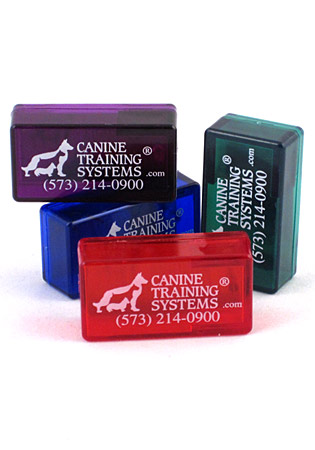When dog trainers are asked if they know what moment markers are, they invariably say "Yes, absolutely", and go on to explain the benefits and how great an idea it is to use them. For anyone that doesn't know, a moment marker is just a signal (usually auditory) that the behavior that occurred at the moment of the "mark" was the target behavior the trainer was looking for. It pinpoints a behavior in time for the dog. When the mark is consistently paired with a primary reinforcer (food, toy, etc.), conditioning occurs. The mark will come to elicit the same emotional reponse the primary reinforcer does. At that point it's called a secondary reinforcer. It doesn't happen immediately but can happen very quickly. If a moment marker is followed by a reward, then the behavior that resulted in reward becomes important to the dog and he's more likely to repeat it. It's pretty straightforward stuff.
Because markers isolate moments in time, it's a very clear, clean way to communicate with the dog in terms he understands. As long as the marker/reward relationship is maintained, the strength and durability will remain. Because dogs are masters of physical cues and body language, an auditory marker cuts through the static and makes target behavior identification very clear. Simply listen for the mark!
 I've seen and recorded dog trainers for years in the process of producing our award winning instructional titles and as the trends in training have leaned toward more "clean" techniques, the question of whether people use markers is asked more and more often. The answer is almost invariably yes. When asked what is used as a marker, the most common response is the word "yes" or "good". Here's the hitch. When many trainers claim they use markers, and I speak from having watched countless hours of video footage of it, they actually don't. What often happens is that the verbal marker is changed, the inflection of it's use varies and it's appearance in training is very inconsistent. BUT....some is better than none. The majority of trainers are using a reward based system for teaching and shaping new behaviors and providing some level of feedback to the dog! Even if a dog is trained with nothing more than leash and collar, it's better that he at least be told when he did the right thing than simply be punished for not doing it. He would have a chance...
I've seen and recorded dog trainers for years in the process of producing our award winning instructional titles and as the trends in training have leaned toward more "clean" techniques, the question of whether people use markers is asked more and more often. The answer is almost invariably yes. When asked what is used as a marker, the most common response is the word "yes" or "good". Here's the hitch. When many trainers claim they use markers, and I speak from having watched countless hours of video footage of it, they actually don't. What often happens is that the verbal marker is changed, the inflection of it's use varies and it's appearance in training is very inconsistent. BUT....some is better than none. The majority of trainers are using a reward based system for teaching and shaping new behaviors and providing some level of feedback to the dog! Even if a dog is trained with nothing more than leash and collar, it's better that he at least be told when he did the right thing than simply be punished for not doing it. He would have a chance...
The clicker is a small plastic and tin noise maker devoid of emotion. It does one thing. It makes a unique sound. It's a piece of equipment. It's no different than a collar, leash, toy or any inanimate object. Using one is simple. From watching hours and hours of footage, I've observed that when a clicker is used, training is more thoughtful, marks are more well placed, progression is more rapid and problems are overcome more quickly. I use one occasionally but should more often for many things. A lot of people have issues with what's termed "clicker training". What's meant by this term, generally speaking, is the use of purely reward based methods, with no behavioral consequence other than absence of reward. No problem, if that's how someone wants to train, it's fine by me. The opposite of a reward is, in the end, simply withholding that reward. Corrections are something entirely different.
Because a clicker uses different skeletal muscles than speech and requires some effort to be accurate, it insists on attention to detail. It's a unique sound to the environment (unless you train in a clicker testing facility) and requires thoughtful application. The only con to using one is not always having one at the ready when you need it. The worst thing that can happen in this instance is that your verbal marker timing is better and more consistent through practice with a clicker! Not a bad trade off! I'd recommend giving a clicker a try if you don't use one already and see if clearer marking benefits your training. At the end of the day, that's what really matters.
http://www.caninetrainingsystems.com/product/CLICKERS/Clickers




